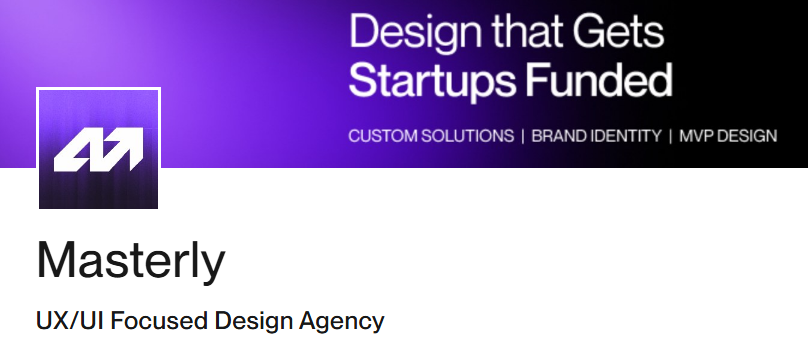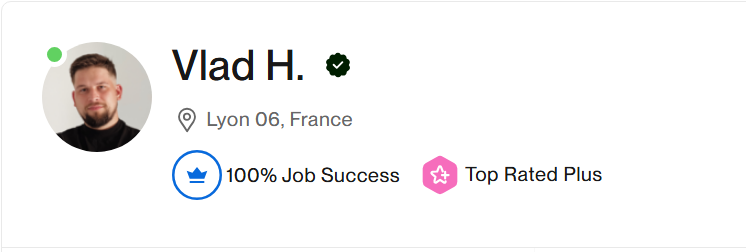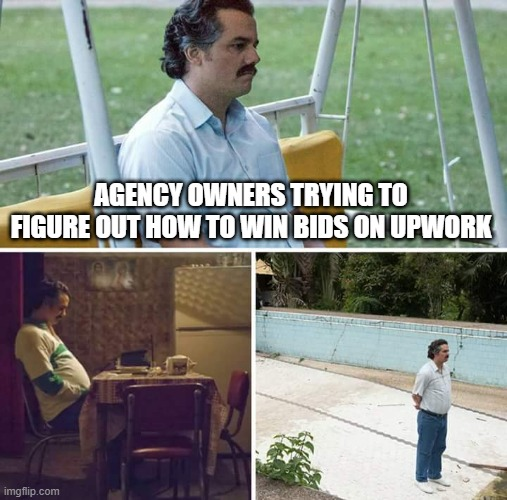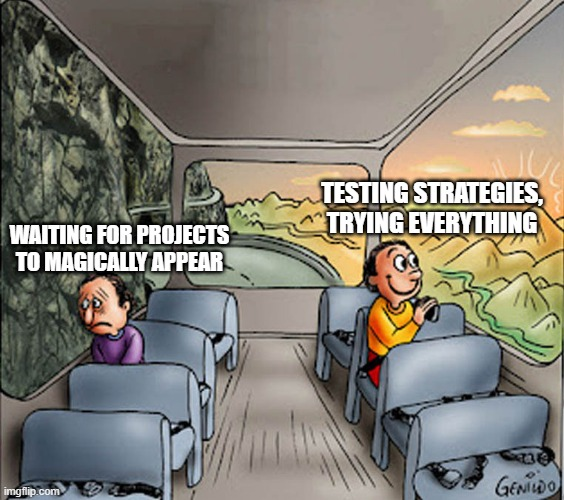
Introduction
When Vlad Hrynchuk, founder of the UX/UI design-focused agency Masterly, first started working on Upwork, he was no stranger to the challenges of building a sustainable client pipeline. His early years on the platform were spent refining his design skills, growing his professional network, and gradually transitioning from a solo freelancer into a team leader. But with growth came new demands, an agency requires not just consistent work, but a higher volume of projects, faster response times, and more predictable revenue streams.


A Manual, Time-Consuming Process Before GigRadar
Before discovering GigRadar, Masterly’s lead generation was entirely manual. Vlad employed a lead generation manager whose job was to search for new projects, categorize them, and send out proposals. While this approach allowed some control over quality, it was limited by human capacity and vulnerable to delays caused by holidays, sick leave, or simply the time it took to react to a new job posting.
The numbers tell the story, at most, the team could send around 10 proposals per day. And in a competitive environment like Upwork, where timing can be the difference between winning and losing a project, these delays were costly. Vlad recalls:
A physical person can’t do what GigRadar can. GigRadar doesn’t take holidays, sick leaves, or sleep at night. It sends a proposal no more than 10 minutes after a job is published, and very often, we close the deal just because we were the first to reply.
Upwork was already their main source of clients; other platforms and channels were tested, but none matched its effectiveness. Yet, Vlad knew that without a significant change in how they approached bidding, scaling the business would remain out of reach.

Searching for a Better Way
By the time Vlad discovered GigRadar, Masterly had reached what he calls a bottleneck moment. Manual proposal sending simply wasn’t delivering consistent results anymore. He needed something that could drastically change the game.
When GigRadar appeared, the timing was perfect. The promise of speed, automation, and built-in intelligence was appealing, but Vlad approached the idea with a mix of optimism and caution. His main hesitation was cost, not just the GigRadar subscription itself, but the additional Connects needed to sustain higher proposal volumes. There was also a learning curve to setting up job scanners effectively.
Despite these concerns, he decided to give the platform a try. The results, as he says, were almost immediate:
In the first two months, it changed a lot. We started receiving customers regularly. It’s not a magic pill that solves every problem, but it keeps our ship on the waves all the time. You automate, and it works, so you can focus on something else.
Transitioning to Automation
When Masterly began using GigRadar two years ago, they initially spread their efforts across three different Upwork profiles. Over time, they realized that focusing on one highly optimized profile produced better results, so they concentrated their activity there while preparing to grow a second.
Today, GigRadar sends 300–500 proposals per month for Masterly, more than double or even triple what a manual team could manage. The Laziza AI feature helps them filter out irrelevant or scam jobs, ensuring their Connects are spent wisely.

One of the biggest changes came with how they approached cover letters. Early on, Masterly relied on repetitive templates that barely changed from one proposal to another. Now, AI-generated, prompt-driven personalization has transformed their outreach.
When we started, our cover letters were almost the same for all jobs, just templates. Now, with prompts, GigRadar personalizes everything automatically. I don’t have to write proposals myself or check my lead generation manager’s work every time.
Growth in Revenue, Leads, and Team Size
The impact of GigRadar has been significant. Vlad estimates that Masterly has earned between $200K and $300K through Upwork projects found using GigRadar over the past two years. The consistency in lead generation has not only increased revenue but also allowed for strategic growth.

From a team of just three people at the start, Masterly has expanded to ten full-time employees and an additional five to seven freelancers. Their daily lead flow now averages at least two to three new opportunities from Upwork alone.
The tool paid for itself quickly, within the first month or two, and long-term client relationships have ensured ongoing returns. As Vlad puts it:
A long-term customer always pays for the expenses on GigRadar. We focus on customer retention so that even if it’s just one client, they keep bringing projects.
Adapting to a Competitive Marketplace
Upwork has evolved significantly in recent years, with more freelancers and agencies turning to automation, and even the platform itself introducing AI-generated proposals. Vlad believes that trying to compete without automation today is nearly impossible:
I don’t think it’s possible to use Upwork without automation anymore because everyone is using it. Even on Upwork, you’ve got AI-generated proposals. If you’re not fast and relevant, you’re already behind.
Still, he warns that automation alone is not enough. GigRadar is most effective when combined with a well-optimized profile, active engagement, and strategic bidding.
Advice for Other Agencies
From Vlad’s experience, the secret to sustainable Upwork growth is to use everything the platform offers, starting from proposals and ads to portfolio projects linked to jobs, and to remain consistently active. He has observed that the platform rewards engagement:
If the platform identifies that you are active from all sides, it brings you leads. If you slow down and do less, you get fewer opportunities.

He likens GigRadar to a fishing rod:
GigRadar is a wonderful tool if you know how to use it. It’s like fishing, you have the rod, but you still need to put in the effort to catch the fish. Learn the tool, set it up right, and it will work.
Conclusion
For Vlad Hrynchuk and Masterly, GigRadar has become a cornerstone of their growth strategy on Upwork. By automating the time-consuming parts of lead generation, they’ve been able to respond to clients faster, send more targeted proposals, and significantly scale both their revenue and team.
With $200K–$300K in earnings from projects found via GigRadar, Masterly’s journey proves that in today’s competitive Upwork environment, smart automation isn’t just a convenience, it's a necessity.
If you want to transform your Upwork results, book a demo with GigRadar today and see how top agencies are automating their way to success.


